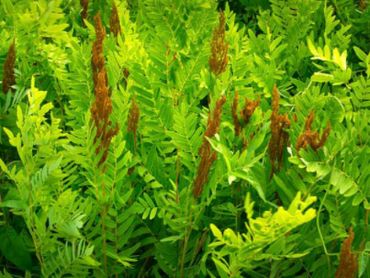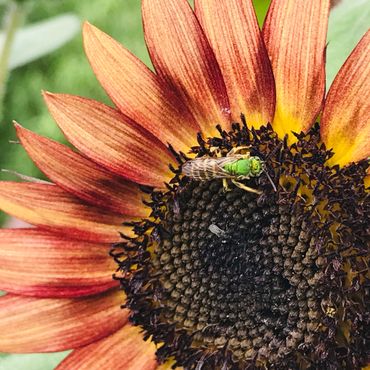Why Should We Choose Native Plants?
What is a native plant?
Supporting native species
Supporting native species

A native plant is a plant that is a part of the balance of nature that has evolved over hundreds or thousands of years in a particular region or ecosystem.
The word native should always be used with a geographic qualifier (that is, native to Alabama or native to Bibb County, Alabama [for example]). Only plants found in this country before European settlement are considered to be native to the United States.
WHY PLANT NATIVES?
When you add native plants to your garden, you are directly benefiting the survival of native animal species, some of which may be threatened with extinction due to habitat loss. Planting native plants is the easiest act of environmental conservation. Let’s dive deeper!
Supporting native species
Supporting native species
Supporting native species

Native plants are recognized and enjoyed by native animals. Some animals have evolved to form specialized relationships with plants in which one or both species depend on each other for survival. Such mutualistic connections are best known between milkweed and the monarch, however they can also be found between ants and spring ephemerals, tree roots and fungi, bumblebees and wildflowers, and beyond.
The life sustaining benefits of native plants radiate in all directions, beginning with arthropods and insects (who provide nutrition for small mammals and birds), and extending to creatures as large and diverse as the great horned owl, black bear, or the American beaver. It is in this sense that native plants form the cornerstone of a food web that ripples across every spectrum of life.
Soil Restoration
Supporting native species
Sustainability & Education

The ecological benefits of native plants persist beneath our feet. The roots of native plants such as black locust form symbiotic relationships with bacteria, a partnership that results in nitrogen, an essential element in plant growth and soil fertility. The presence of nitrogen-fixing natives will boost nutrients for every plant nearby, and thus benefit the whole plant community. The underground areas around plant roots (known as the rhizosphere) are hubs for microorganisms who feed on the proteins and sugars that roots secrete. This activity around plant roots can be thought of as a mirror image of the nourishing action that the same plants are providing above ground.
Plant roots that are both fibrous and widespread, such as little bluestem, are crucial in the stabilization of topsoil, particularly in flood prone areas. Common aquatic plants such as cattails can absorb and recycle pollutants before they assimilate into rivers and streams. Without the protective barriers of native riparian plants, the waters of the United States would be inundated with eroded soil and pollutants, with devastating results for our drinking water and freshwater ecosystems. Storms would meet no resistance and their floodwaters would undermine the foundations of forests and cities alike.
Sustainability & Education
So, plants do amazing things, but why do they have to be “native”?
Sustainability & Education

Because native plants are adapted to their local climates, they do not need water or nutrients in excess of what the environment already provides. Many native plants are perennials, meaning their root systems persist year-round. Having a garden of perennials means not having to disturb the soil and replace plants on a seasonal basis, and that means less fossil fuel emissions into the atmosphere through transportation (truck driving) and climate control (heated greenhouses) of non-native plants. Native plants are very efficient in storm water absorption, which reduces run-off, especially in populated cities where heavy rain can cause flooding.
Native plant gardens also provide opportunities to observe nature in action, be it pollinators visiting flowers, songbirds perching in bushes, or earthworms carving through fertile soil. Watching these plant and animal relationships unfold before your eyes can instill a deep appreciation of the value and interconnectivity of our ecosystems
So, plants do amazing things, but why do they have to be “native”?
So, plants do amazing things, but why do they have to be “native”?
So, plants do amazing things, but why do they have to be “native”?

You may wonder why a plant must be native to a country, state, or region in order for said plant to truly enhance the quality of life for other members of the ecosystem. If a fruit bush found in Asia makes large, nutritious fruit, surely the birds would enjoy it here in Alabama? If a grass found in Australia is great for soil stabilization, maybe we could plant it along the Coosa River? The answer to such questions lies in evolution.
Plants that evolve together will eventually develop an efficient means of co-existing in which one plant’s growth habits will not interfere with the other, thus creating harmony in the ecosystem. When plants that do not “know” each other meet, they will almost always form an inefficient, destructive relationship in which one or both plants are killed or damaged. An excellent illustration of this evolutionary truth is found when comparing virginia creeper, a vine native to the United States, with an invasive vine such as kudzu. Because Virginia creeper evolved with our native trees, it has slowly “learned” that covering the tree’s canopy will deprive the tree of sunlight, and eventually kill the tree. It is not in the interest of a vine to fell the tree that allows it to bask in sunlight, while soaking in water that drips from the tree’s leaves. For this reason, Virginia creeper has evolved to remain only on the tree’s trunk, thus permitting the survival of its host. Kudzu, on the other hand, has not naturalized among our tree population, and its aggressive behavior has destroyed acres of forest in the southern United States.
It's a Win-Win!
Beneficial for the Environment...

Supports Native Species
Freedom from Pesticides
Supports Native Species

Supports Pollinators
Freedom from Pesticides
Supports Native Species

Freedom from Pesticides
Freedom from Pesticides
Freedom from Pesticides
and Beneficial For You!

Low Maintenance
Attracts Wildlife to Your Yard
Saves Time and Money

Saves Time and Money
Attracts Wildlife to Your Yard
Saves Time and Money

Attracts Wildlife to Your Yard
Attracts Wildlife to Your Yard
Attracts Wildlife to Your Yard
If you live in Alabama, we've done the homework for you!
Recreative Natives is a small nursery specializing in the propagation of plants native to Alabama and the Southeast. Our plants are pesticide free and we collect our own local eco-type seeds in order to increase the biodiversity of native flora. Our goal is to make native plants more accessible for the home landscape in order to protect all the fauna that depend on them.






This website uses cookies.
We use cookies to analyze website traffic and optimize your website experience. By accepting our use of cookies, your data will be aggregated with all other user data.